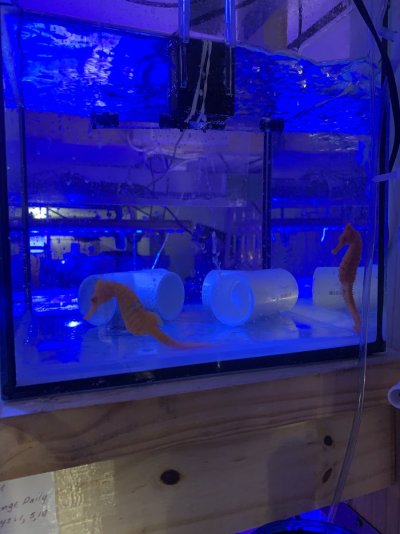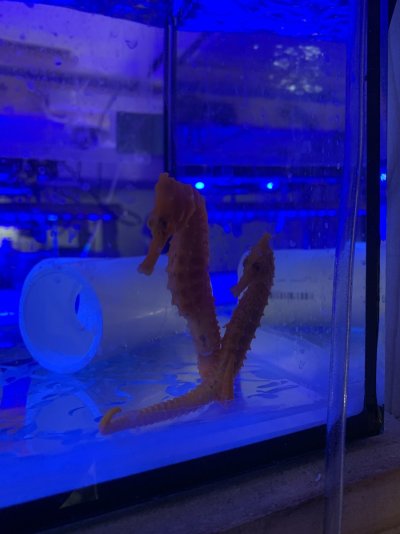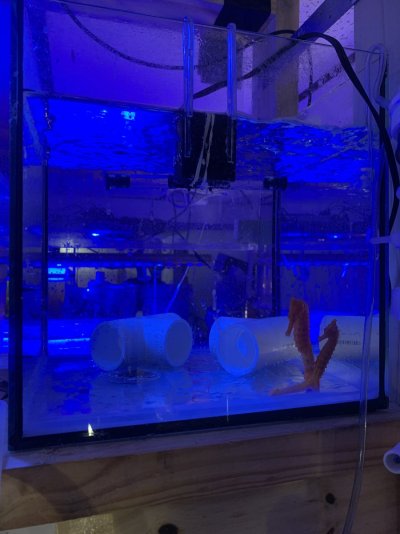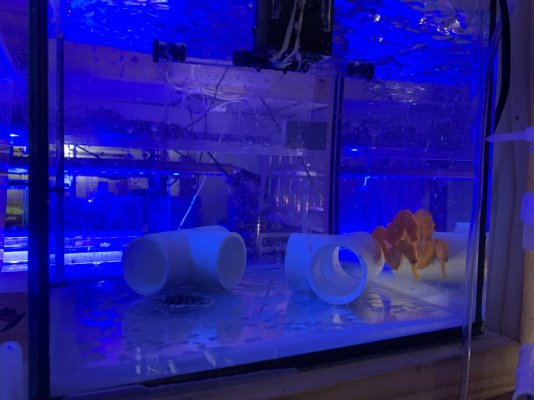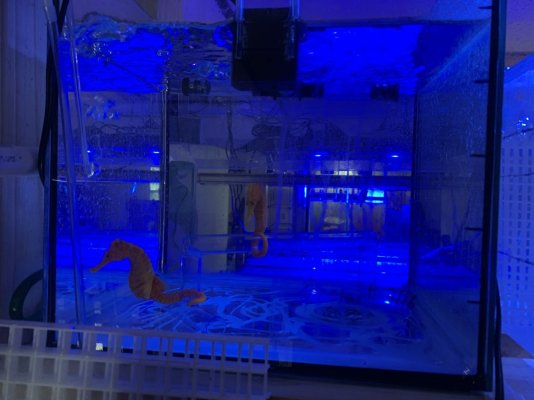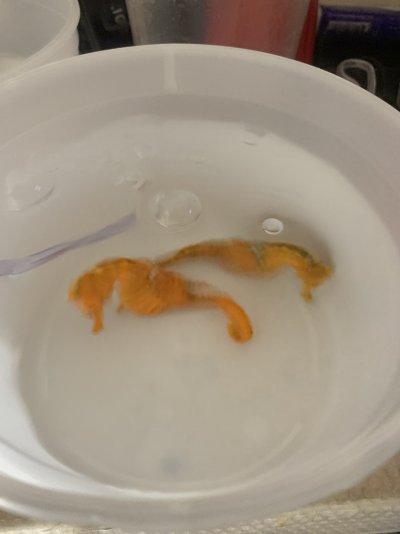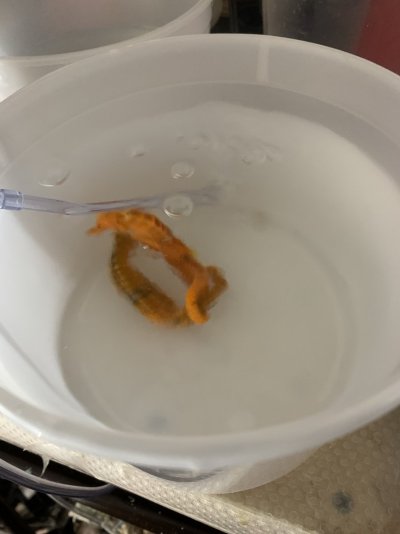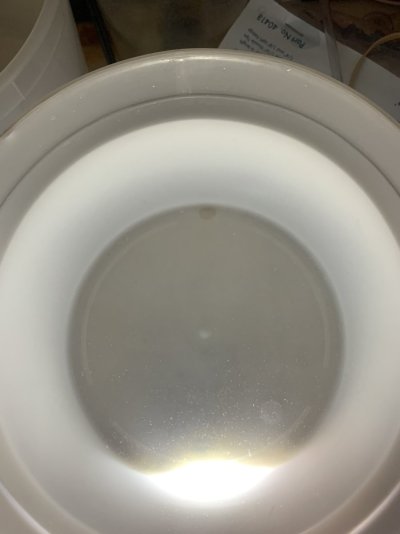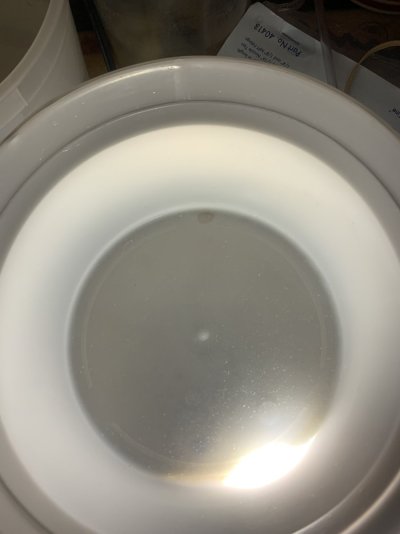Hey Guys,
Ok, so, thought to setup a log thread of two new wild caught erectus that I had picked up today from one my lfs to log the quarantine and food conversion (live to frozen) process as I go through it.
So, to start off with, going to get into the quarantine system setup and the plan for the quarantine / food conversion cycle
For the quarantine system:
the quarantine system consists of two 5 gallon cube tanks which are about a foot from each other. The tank has been plumbed to have a drain line with a 1 1/2 inch bulkhead at the bottom as well as a 1/4 inch sheet of drilled acrylic at the bottom to make the bottom flush with the top of the bulkhead. To seal the acrylic at the bottom and prevent water from getting between the acrylic and the glass bottom, silicone was put between the acrylic sheet and the glass then a silicone bead along all four corners. The bulkhead also has a small sheet of 1/8 inch hole nylon mesh glued on top of the bulkhead , so this allows food to drain out of the tank with the water without any fish going down the drain. The bulkhead is also plumbed into a ball valve under each tank which allows for fast drainage of the water, and under the ball valve there is a 3 ft length of 2inch silicone tubing which allows the drain water to be dumped into a 5 gallon bucket.
Inside each quarantine tank is a length of rigid airline connected to an air pump, as well as a 90gph fountain pump with a tee adapter glued to the output as well as 1/4 inch tubing drilled and glued on each side. The fountain pumps when on provided enough water circulation to keep the food at the bottom of the tank moving around, which I have found helps with getting finicky fish to eat.
Attached below is a picture of the setup
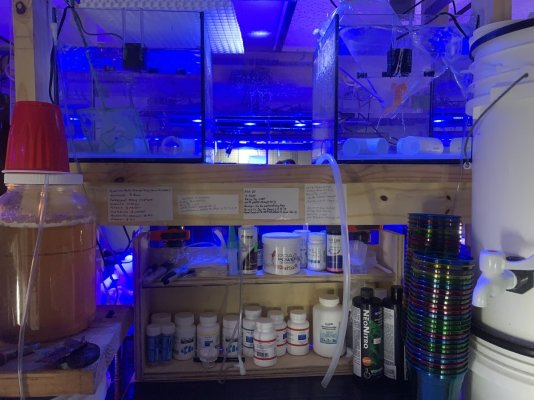
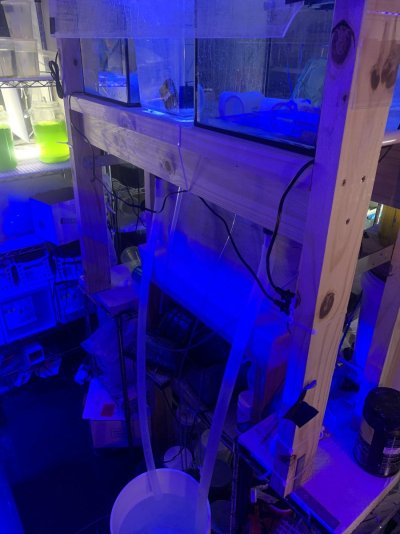
Ok, so, thought to setup a log thread of two new wild caught erectus that I had picked up today from one my lfs to log the quarantine and food conversion (live to frozen) process as I go through it.
So, to start off with, going to get into the quarantine system setup and the plan for the quarantine / food conversion cycle
For the quarantine system:
the quarantine system consists of two 5 gallon cube tanks which are about a foot from each other. The tank has been plumbed to have a drain line with a 1 1/2 inch bulkhead at the bottom as well as a 1/4 inch sheet of drilled acrylic at the bottom to make the bottom flush with the top of the bulkhead. To seal the acrylic at the bottom and prevent water from getting between the acrylic and the glass bottom, silicone was put between the acrylic sheet and the glass then a silicone bead along all four corners. The bulkhead also has a small sheet of 1/8 inch hole nylon mesh glued on top of the bulkhead , so this allows food to drain out of the tank with the water without any fish going down the drain. The bulkhead is also plumbed into a ball valve under each tank which allows for fast drainage of the water, and under the ball valve there is a 3 ft length of 2inch silicone tubing which allows the drain water to be dumped into a 5 gallon bucket.
Inside each quarantine tank is a length of rigid airline connected to an air pump, as well as a 90gph fountain pump with a tee adapter glued to the output as well as 1/4 inch tubing drilled and glued on each side. The fountain pumps when on provided enough water circulation to keep the food at the bottom of the tank moving around, which I have found helps with getting finicky fish to eat.
Attached below is a picture of the setup







